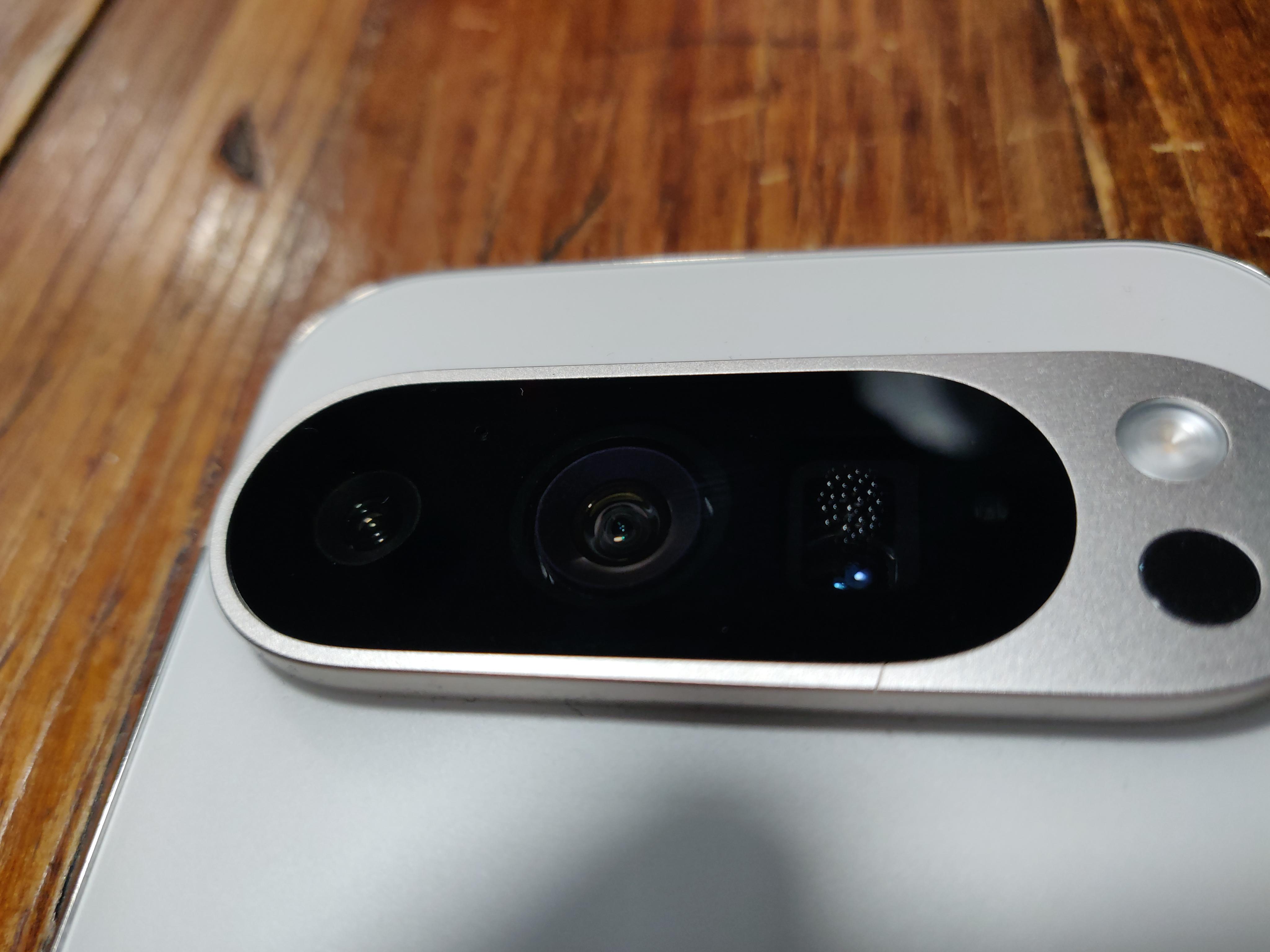I really tried making Logseq work for me but even if they added some kind of organization/hierarchy, I still had performance issues with my limited notes (just testing things, didn't want to go all the way in), and various copy/paste drag and drop UX issues that made the experience frustrating.
I was previously using Obsidian, which is great! but didn't like that it was closed source. I then went on to try various options [0] but none of them felt "right". I eventually found notesnook and it hit everything I was looking for [1]. It's only gotten better in the last year I started using it and just recently they introduced the ability to host your own sync server, which is one of the requirements it didn't initially make, but was on their roadmap.
[0] Obsidian, Standard Notes, OneDrive, VSCode with addons, Joplin, Google Keep, Simple Notes, Crypt.ee, CryptPad (more of a collabroation suite, which I actually really like, but it did not fit the bill of a notes app), vim with addons, Logseq, Zettlr, etc.
[1] Requirements in no particular order:
- Open source client and server.
- Cross-platform availability as I use Windows, Linux, Mac, and Android.
- Cross-platform feature parity.
- Doesn't fight me over how notes should be taken - looking at Logseq's lack of organization.
- Easy notes syncing.
- End-to-end encryption (E2EE). It's about to be 2025, if the tools you're picking up aren't E2EE, you're letting unknown strangers access your data and resell it. It doesn't matter what their privacy policy says as that can always change and/or they can get compromised/compelled to expose your data.
- Ability to publish notes.
- Decent UX.
Step 1 is critical because ad blockers on Chrome (for obvious reasons) have some limitations. Even the developer of uBlock origin recommends Firefox: https://github.com/gorhill/uBlock/wiki/uBlock-Origin-works-best-on-Firefox
Signal > Matrix/Element > RCS > SMS.
iMessage isn't in the equation because it only works on a single platform.
If you're on Firefox on desktop/laptop, check out Bypass Paywall [0]. It was removed from the firefox add-on store due to a DMCA claim [1], but can be manually installed (and auto updates) from gitlab. The dev even provides instructions on how to add custom filters to uBlock Origin [2], so you don't have to add another extension but still get some benefit.
[0] https://gitlab.com/magnolia1234/bypass-paywalls-firefox-clean
[1] https://winaero.com/mozilla-has-silently-removed-the-bypass-paywalls-clean-add-on-from-amo/
[2] https://gitlab.com/magnolia1234/bypass-paywalls-clean-filters
Although completely believable and in-line knowing Meta/Facebook's history, is there any evidence to support this claim? I'm sure it's, unfortunately, just as easily deployed to specific targets so it may be hard to replicate, but this is pretty huge.
Anyone have any links/sources?
EDIT:
Found the source post: https://mastodon.social/@protonmail/111699323585240444
and the article: https://gizmodo.com/meet-link-history-facebook-s-new-way-to-track-the-we-1851134018
for those not familiar, this basically lets you run command line tools. anything with a GUI will not work.
Tangentially related, if you use iMessage, I'd recommend you switch to Signal.
text below from a hackernews comment:
Gonna repeat myself since iMessage hasn't improved one bit after four years. I also added some edits since attacks and Signal have improved.
iMessage has several problems:
- iMessage uses RSA instead of Diffie-Hellman. This means there is no forward secrecy. If the endpoint is compromised at any point, it allows the adversary who has
a) been collecting messages in transit from the backbone, or
b) in cases where clients talk to server over forward secret connection, who has been collecting messages from the IM server
to retroactively decrypt all messages encrypted with the corresponding RSA private key. With iMessage the RSA key lasts practically forever, so one key can decrypt years worth of communication.
I've often heard people say "you're wrong, iMessage uses unique per-message key and AES which is unbreakable!" Both of these are true, but the unique AES-key is delivered right next to the message, encrypted with the public RSA-key. It's like transport of safe where the key to that safe sits in a glass box that's strapped against the safe.
- The RSA key strength is only 1280 bits. This is dangerously close to what has been publicly broken. On Feb 28 2023, Boudet et. al broke a 829-bit key.
To compare these key sizes, we use https://www.keylength.com/en/2/
1280-bit RSA key has 79 bits of symmetric security. 829-bit RSA key has ~68 bits of symmetric security. So compared to what has publicly been broken, iMessage RSA key is only 11 bits, or, 2048 times stronger.
The same site estimates that in an optimistic scenario, intelligence agencies can only factor about 1507-bit RSA keys in 2024. The conservative (security-consious) estimate assumes they can break 1708-bit RSA keys at the moment.
(Sidenote: Even the optimistic scenario is very close to 1536-bit DH-keys OTR-plugin uses, you might want to switch to OMEMO/Signal protocol ASAP).
Under e.g. keylength.com, no recommendation suggest using anything less than 2048 bits for RSA or classical Diffie-Hellman. iMessage is badly, badly outdated in this respect.
- iMessage uses digital signatures instead of MACs. This means that each sender of message generates irrefutable proof that they, and only could have authored the message. The standard practice since 2004 when OTR was released, has been to use Message Authentication Codes (MACs) that provide deniability by using a symmetric secret, shared over Diffie-Hellman.
This means that Alice who talks to Bob can be sure received messages came from Bob, because she knows it wasn't her. But it also means she can't show the message from Bob to a third party and prove Bob wrote it, because she also has the symmetric key that in addition to verifying the message, could have been used to sign it. So Bob can deny he wrote the message.
Now, this most likely does not mean anything in court, but that is no reason not to use best practices, always.
-
The digital signature algorithm is ECDSA, based on NIST P-256 curve, which according to https://safecurves.cr.yp.to/ is not cryptographically safe. Most notably, it is not fully rigid, but manipulable: "the coefficients of the curve have been generated by hashing the unexplained seed c49d3608 86e70493 6a6678e1 139d26b7 819f7e90".
-
iMessage is proprietary: You can't be sure it doesn't contain a backdoor that allows retrieval of messages or private keys with some secret control packet from Apple server
-
iMessage allows undetectable man-in-the-middle attack. Even if we assume there is no backdoor that allows private key / plaintext retrieval from endpoint, it's impossible to ensure the communication is secure. Yes, the private key never leaves the device, but if you encrypt the message with a wrong public key (that you by definition need to receive over the Internet), you might be encrypting messages to wrong party.
You can NOT verify this by e.g. sitting on a park bench with your buddy, and seeing that they receive the message seemingly immediately. It's not like the attack requires that some NSA agent hears their eavesdropping phone 1 beep, and once they have read the message, they type it to eavesdropping phone 2 that then forwards the message to the recipient. The attack can be trivially automated, and is instantaneous.
So with iMessage the problem is, Apple chooses the public key for you. It sends it to your device and says: "Hey Alice, this is Bob's public key. If you send a message encrypted with this public key, only Bob can read it. Pinky promise!"
Proper messaging applications use what are called public key fingerprints that allow you to verify off-band, that the messages your phone outputs, are end-to-end encrypted with the correct public key, i.e. the one that matches the private key of your buddy's device.
- iMessage allows undetectable key insertion attacks.
EDIT: This has actually has some improvements made a month ago! Please see the discussion in replies.
When your buddy buys a new iDevice like laptop, they can use iMessage on that device. You won't get a notification about this, but what happens on the background is, that new device of your buddy generates an RSA key pair, and sends the public part to Apple's key management server. Apple will then forward the public key to your device, and when you send a message to that buddy, your device will first encrypt the message with the AES key, and it will then encrypt the AES key with public RSA key of each device of your buddy. The encrypted message and the encrypted AES-keys are then passed to Apple's message server where they sit until the buddy fetches new messages for some device.
Like I said, you will never get a notification like "Hey Alice, looks like Bob has a brand new cool laptop, I'm adding the iMessage public keys for it so they can read iMessages you send them from that device too".
This means that the government who issues a FISA court national security request (stronger form of NSL), or any attacker who hacks iMessage key management server, or any attacker that breaks the TLS-connection between you and the key management server, can send your device a packet that contains RSA-public key of the attacker, and claim that it belongs to some iDevice Bob has.
You could possibly detect this by asking Bob how many iDevices they have, and by stripping down TLS from iMessage and seeing how many encrypted AES-keys are being output. But it's also possible Apple can remove keys from your device too to keep iMessage snappy: they can very possibly replace keys in your device. Even if they can't do that, they can wait until your buddy buys a new iDevice, and only then perform the man-in-the-middle attack against that key.
To sum it up, like Matthew Green said[1]: "Fundamentally the mantra of iMessage is “keep it simple, stupid”. It’s not really designed to be an encryption system as much as it is a text message system that happens to include encryption."
Apple has great security design in many parts of its ecosystem. However, iMessage is EXTREMELY bad design, and should not be used under any circumstances that require verifiable privacy.
In comparison, Signal
-
Uses Diffie Hellman + Kyber, not RSA
-
Uses Curve25519 that is a safe curve with 128-bits of symmetric security, not 79 bits like iMessage.
-
Uses Kyber key exchange for post quantum security
-
Uses MACs instead of digital signatures
-
Is not just free and open source software, but has reproducible builds so you can be sure your binary matches the source code
-
Features public key fingerprints (called safety numbers) that allows verification that there is no MITM attack taking place
-
Does not allow key insertion attacks under any circumstances: You always get a notification that the encryption key changed. If you've verified the safety numbers and marked the safety numbers "verified", you won't even be able to accidentally use the inserted key without manually approving the new keys.
So do yourself a favor and switch to Signal ASAP.
[1] https://blog.cryptographyengineering.com/2015/09/09/lets-tal...
for anyone wanting to avoid giving "X", formerly known as Twitter, any traffic, here it is.

I've got my vote for the guy who thought carbon fiber would do great under pressure after being told "no" by tons of experts in the field.


yes. use any of the following, in no particular order: